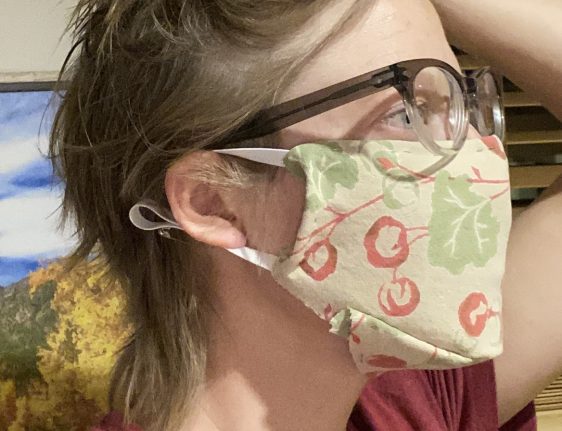Face mask tutorial
This face mask is probably NOT able to keep you safe from the coronavirus which causes CoVID-19. In fact, current guidance suggests that masks actually make you touch your face more than not wearing one. Unless an infected persons coughs directly on you, they probably won’t help, and even then, a mask will only limit virus if you’re not wearing other protection such as a face shield and goggles. Because there’s not a huge prevention benefit, please don’t buy paper masks that other health professionals really need.
However, a mask can keep you from spreading the virus everywhere if you are sick, or if you are caring for a vulnerable person and could be asymptomatic. A paper out today (Mar 19, 2020) suggests viral shedding peaks BEFORE symptoms appear. So wearing a mask might prevent you from spreading the virus even if you don’t know you have it.
If you have any PM2.5 charcoal filters, then you might use them in a mask with a pocket. They absorb all kinds of toxins because activated charcoal has enormous surface area that can trap bacteria, toxins, and virus in water filters and in air filters. But again, this mask is NOT going to save you. Wash your hands and follow the CDC guidelines.
My first and second masks, sewn by hand, took almost 6 hours each. My third mask, stapled together, took 10 minutes. If you’re in a hurry, staple it, and double those staples over for a solid seam!
STEP ONE: FIND SOME CLOTH
I used a dish towel. When I started thinking, I want a mask, I immediately thought of this towel. It’s perfect. I’m using it doubled-over.
For the lining, I used a micro-fiber cloth sack. It was a ski googles sack, large enough to make mask linings. You could choose any soft cloth like a eye-glasses cloth, or a microfiber cleaning cloth, or skip this layer if you’re not going to have a filter in your mask.
You will also need metal for a nose piece. I’ve tried a bent keyring (it was stiff and pierced the fabric later), double twist-ties (seems okay but limp-ish), and a paper clip (perfect.)
For the straps: elastic, shoe string, rubber bands, elastic or inelastic cord.
Construction equipment: Pins, needle and thread, or stapler.
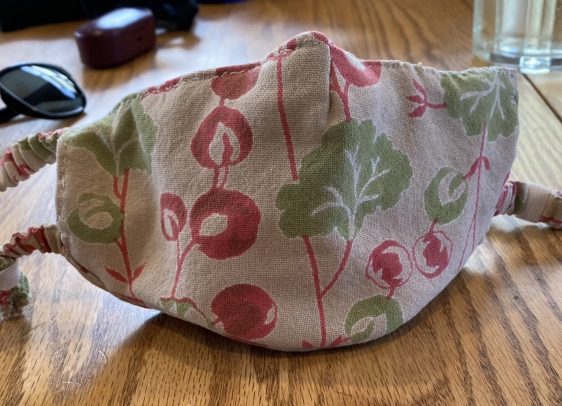
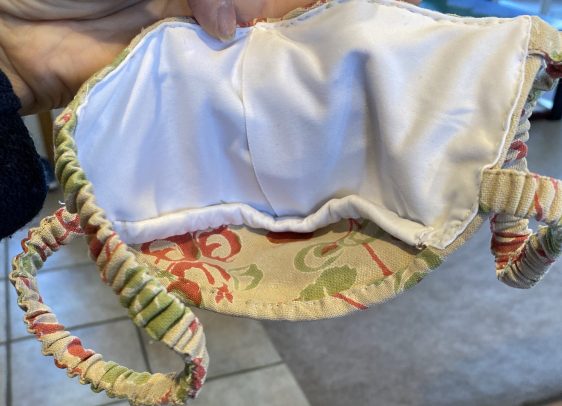
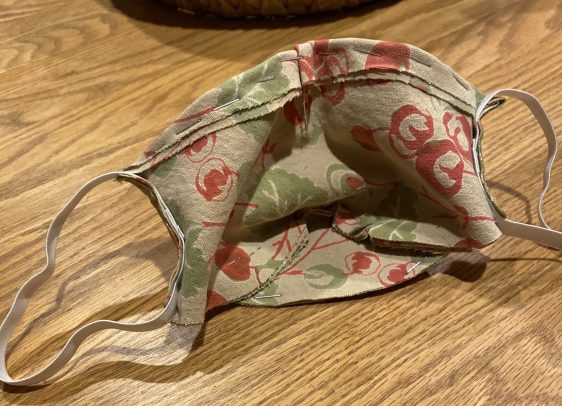
STEP 2: DRAW & CUT OUT YOUR PATTERN
I loosely traced my hand. My hand will cover my face, right? Make it oblong with rectangle ends. Then also draw a chin piece that’s pointy. This will give your mask some depth. Cut a liner if you’re using it (I used white microfiber) and cut it in half, then overlap it, to make a pocket for your PM2.5 filter. I truly don’t know if it will help, but the PM2.5 filter comes with some commercial masks. Download my full-size pattern here (9×12 inches). Please note that if you print it “scaled to fit” on 8-1/2 x 11-inch paper, then it will be smaller than mine was. I recommend printing at 100% size, even if the margins are too small or it goes off the edge. Extrapolate from there.
Cut out the pattern and pin it to doubled-over towel. Trace around the pattern and then cut. I cut three patterns from one towel. Pin it so the towel doesn’t slide around when you’re cutting, otherwise you might have uneven shapes.
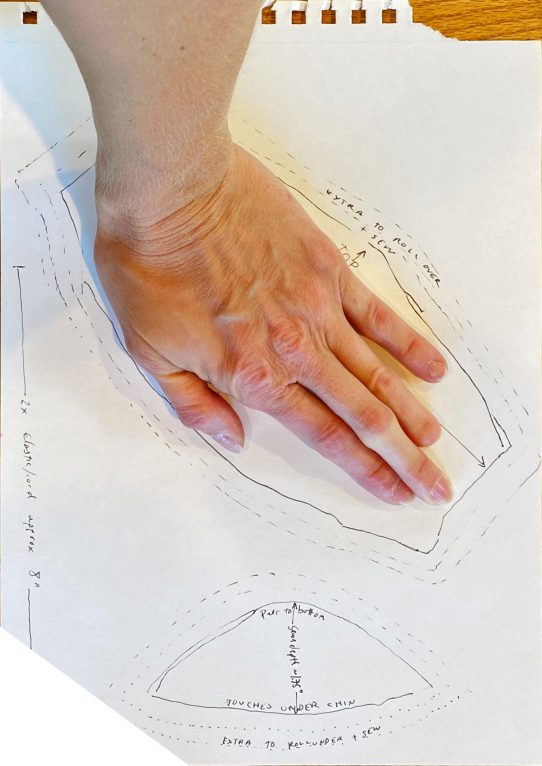
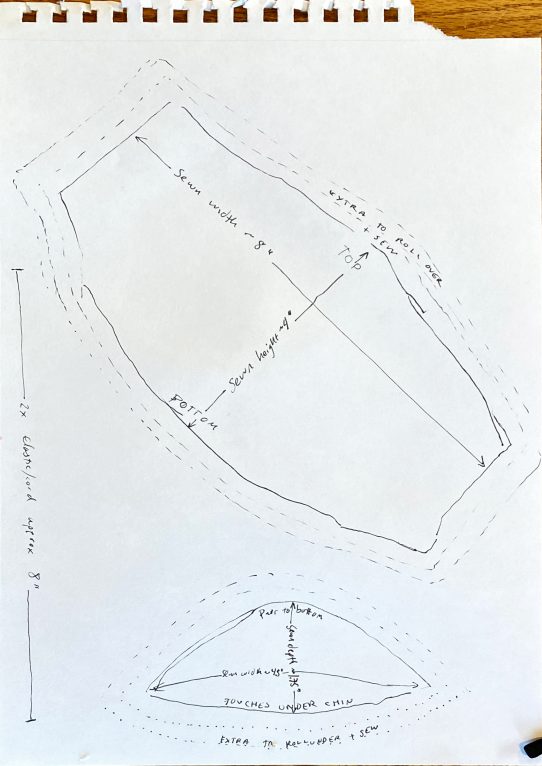
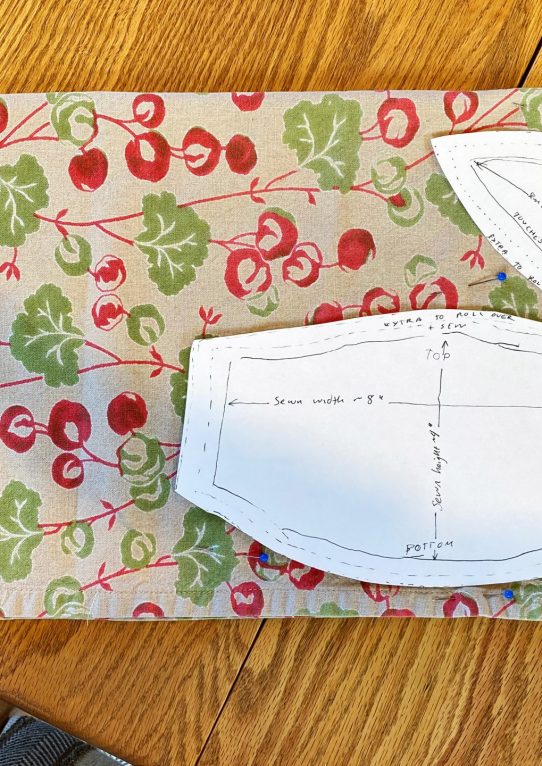
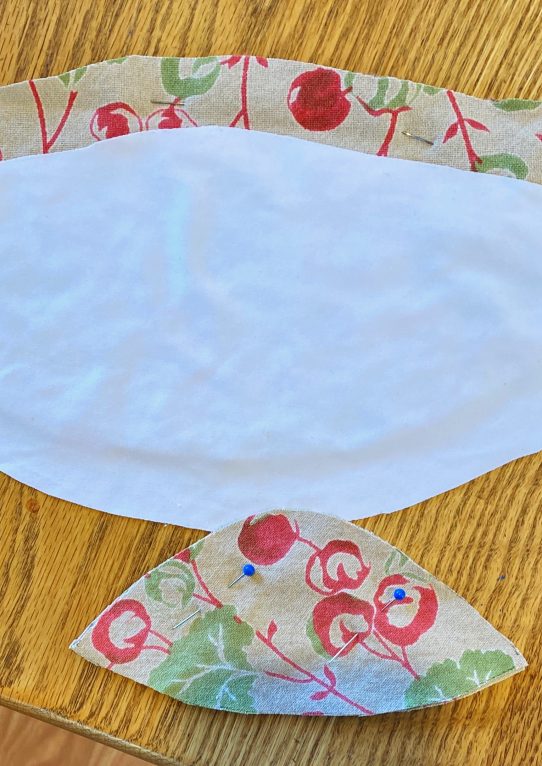
STEP 3: ADD FILTER POUCH (OPTIONAL), ATTACH FACE CLOTH TO CHIN CLOTH
Pin the stack of cloth together at the very center of the bottom of the face. The bottom edges will not match, so when you go around the edge of the face, pull the chin to it, to keep the edges aligned. This creates the depth for your actual chin to jut into. In my most ambitious version, I used a consistent measurement of 0.5″ from the edge of both pieces (blue pencil line) to make sure they’d line up. Then I sewed them up (in green for easy viewing.) On my stapled version, I just winged it and made two rows of staples.
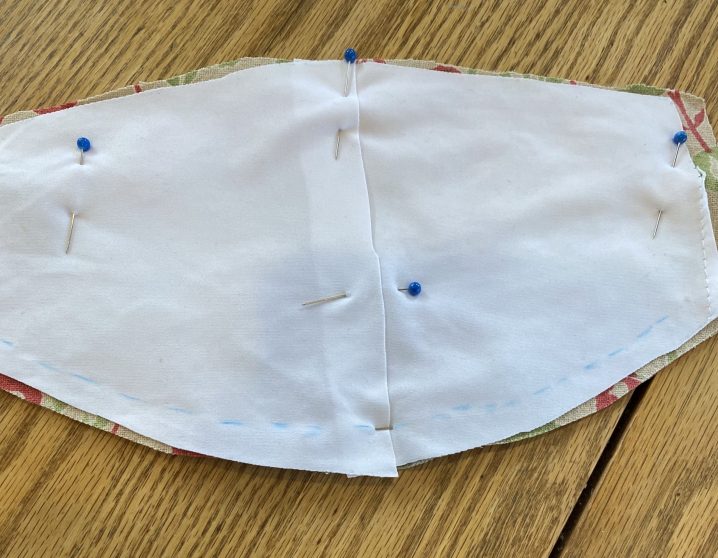
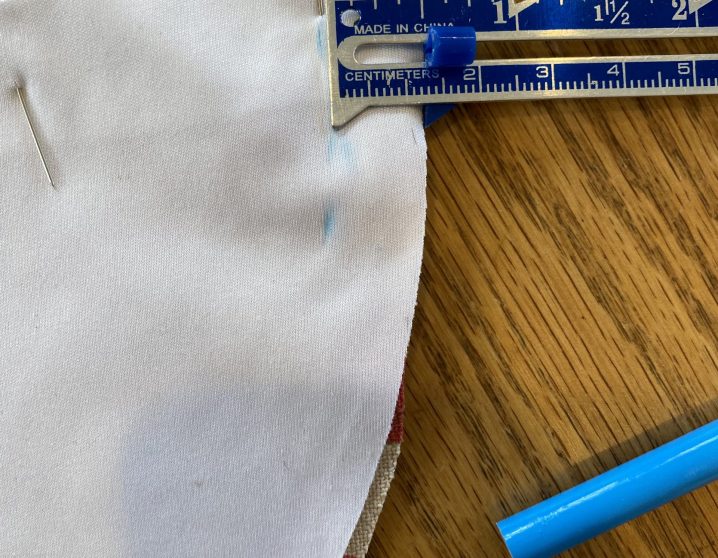
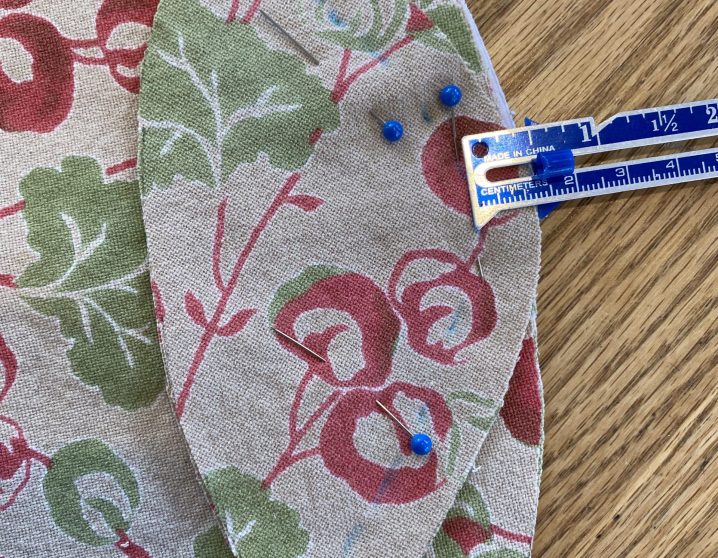
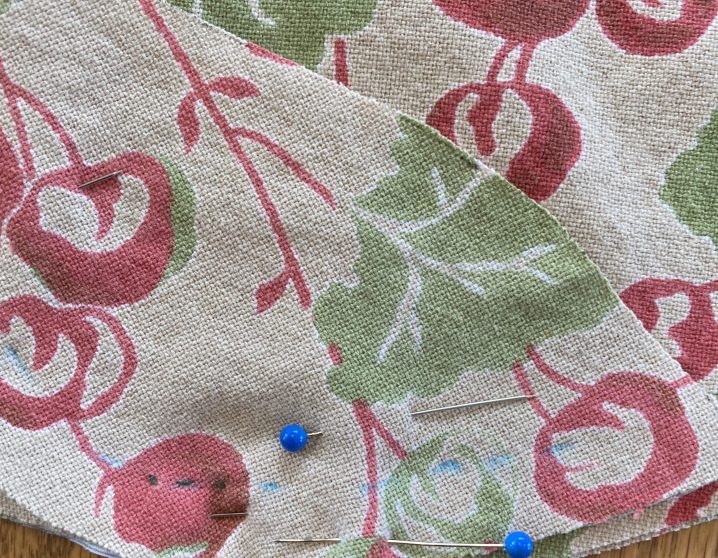
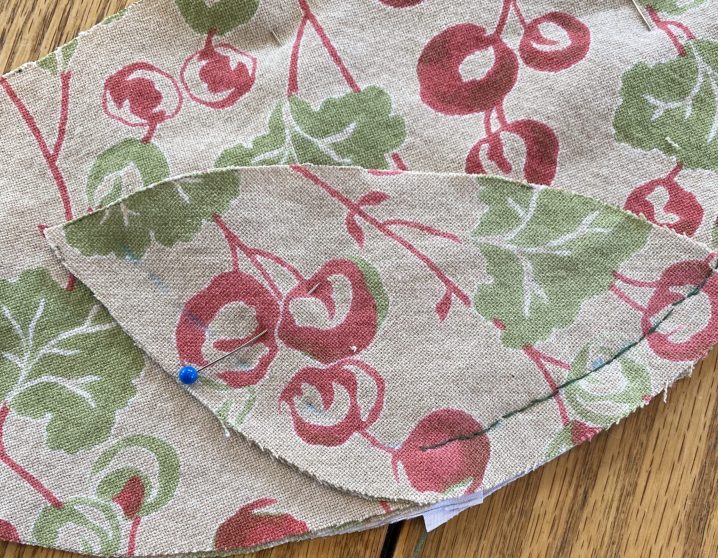
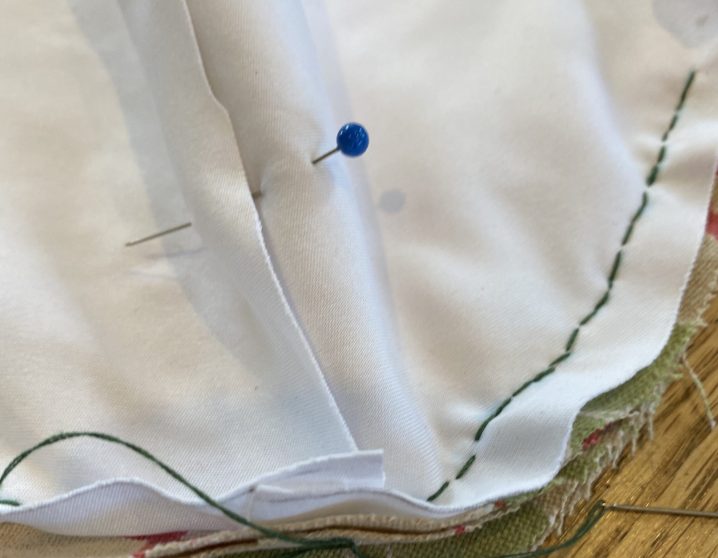
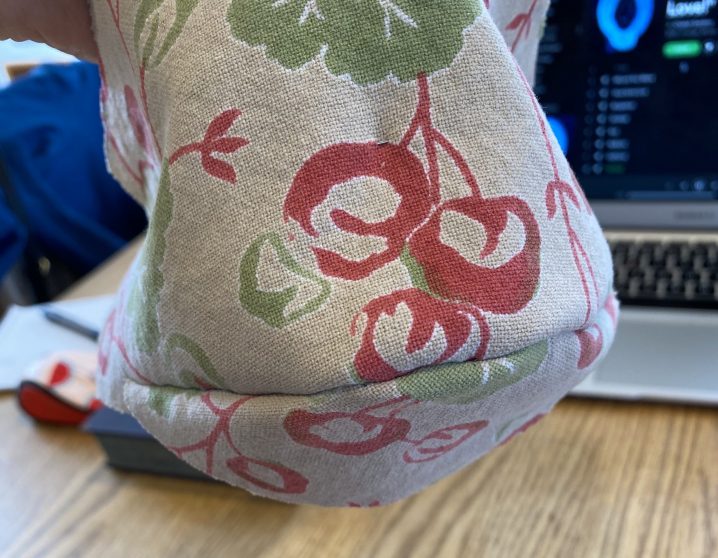
STEP 4: CLEAN UP THE SEAM, FINISH THE EDGE
I cleaned up the seam and finished the fabric under the chin in various ways. For the first two masks, I wrapped the seam with more microfiber to keep it soft on the face and pretty. For the stapled one, the seam needed some notches cut out to make the curve smoother. To finish the edges I wrapped one with extra cloth; on the second one, I tucked the faces in and sewed; and for the stapled one, I just stapled it together (ouchy side of staple closure facing away from the face.)
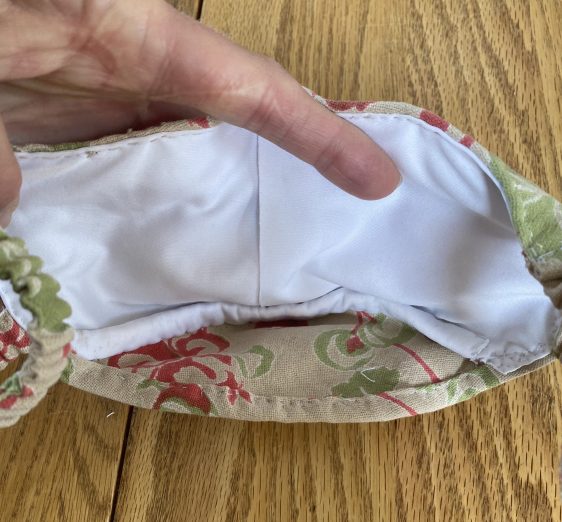
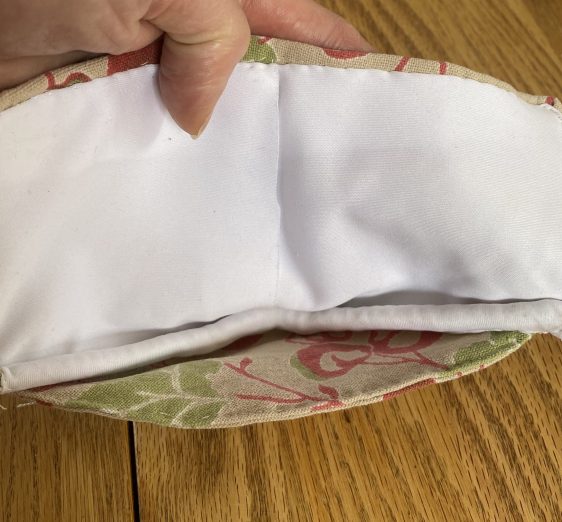
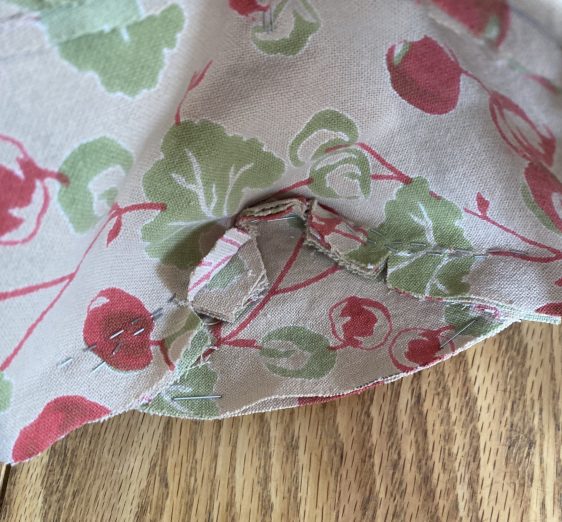
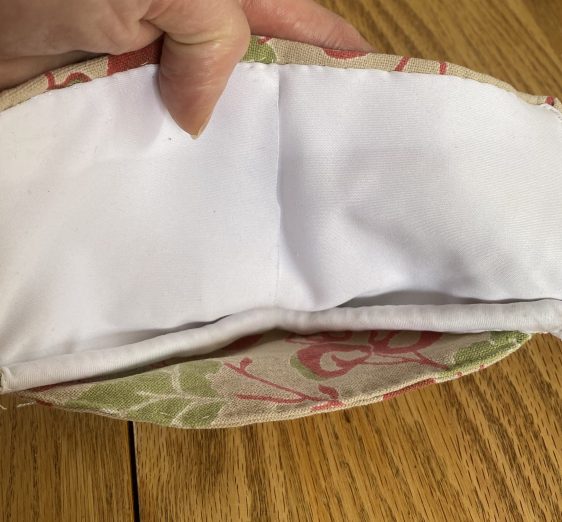
STEP 5: ADD NOSE FORM, FINISH THE TOP EDGE
To contour the top of the mask to the nose, store-bought masks have a thin wide strip of metal. I tried to mimic that in three ways: a bent light-weight key ring, two supermarket twist ties, and a bent open paperclip. I think I prefer the paperclip, it feels sturdy and holds its shape. For each, I just folded about 1/2-inch of the top of the fabric over the metal and sewed it down. For the ones with the microfiber, I sewed down the outer material over the metal, then went back and added the microfiber to hide the seam. For all of them, I just tried to make the top edge look clean, following the curve of the pattern. (See pics above.)
STEP 6: MAKE YOUR STRAPS
For my straps, I used 1/2-inch wide elastic that I happened to have available but I think there are a lot of other options: rubber bands, shoelaces, old headphone cords, hoodie drawstrings. If it’s too long, tie a knot or staple it shorter. For my the nicer masks, I bothered to cover the straps with the edging from the dishtowel. I don’t think this is necessary at all and it doesn’t help the comfort when compared to the straps of my stapled mask. However, if you’re looking for that monochrome look, it’s easy enough. I made my straps about 8 inches long but then I needed to shorten them, so I made little elastic stays and just pinned the bare straps.
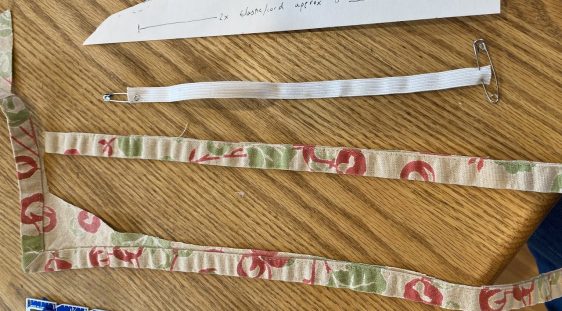
STEP 7: ATTACH STRAPS AND FINISH EDGES
To finish up, I just slid the straps between the fabric layers and tried to make it pretty. I adjusted the straps and voila! Masks.
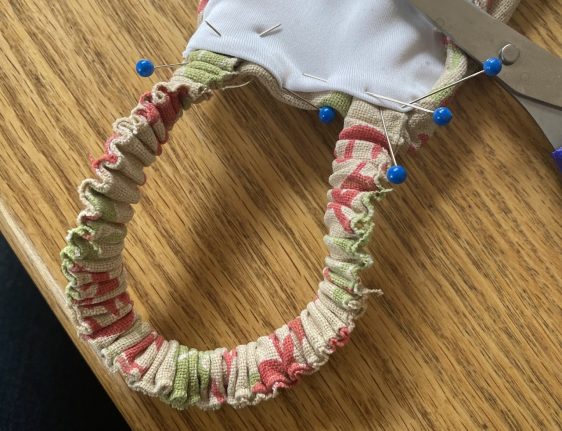
ASSESSMENT: AM I DOING THIS RIGHT?
Again, these masks are a homemade sewing project and I’m not promising they’ll help you avoid the Corona virus. But, when I wore a mask out to the local Petco, I was more aware of not touching my face. I also felt like I could have worn a scarf for about the same level of protection, and masks encouraged if people are symptomatic, so what harm can it do if your alternative is nothing? Also, machine-washable. I’m washing mine when I get home and that’s why I needed several.
